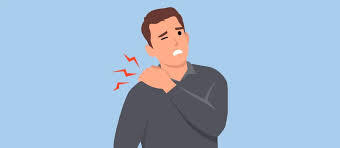Stiff muscles and pain are common issues that can arise from physical activity, poor posture, stress, or underlying medical conditions. While over-the-counter medications and prescription drugs can provide relief, many people prefer natural remedies to address these problems. Natural remedies not only help relax stiff muscles and reduce pain but also promote overall well-being without the risk of side effects associated with pharmaceuticals. This comprehensive guide explores effective, natural remedies to help you find muscle relief and improve your quality of life.
Understanding Stiff Muscles and Pain
Stiff muscles occur when muscles feel tight, sore, or difficult to move. Pain often accompanies stiffness, making it challenging to perform daily activities. Common causes include:
- Physical Activity: Intense exercise or repetitive movements can lead to muscle soreness and stiffness, often referred to as delayed onset muscle soreness (DOMS).
- Stress and Tension: Emotional stress can cause muscles to tighten, leading to discomfort and stiffness.
- Inactivity: A sedentary lifestyle can cause muscles to become weak and stiff over time.
- Medical Conditions: Conditions like arthritis, fibromyalgia, or infections can contribute to muscle stiffness and pain.
Natural remedies offer a safe and effective way to address these issues, promoting relaxation and pain relief without relying on medications.
Remedy 1: Stretching and Yoga
Stretching and yoga are among the most effective natural remedies for relaxing stiff muscles and reducing pain. These practices improve flexibility, increase blood flow, and promote relaxation.
- Dynamic Stretching: Perform dynamic stretches, such as arm circles or leg swings, to warm up your muscles before physical activity.
- Static Stretching: Hold static stretches, such as hamstring or shoulder stretches, for 15–30 seconds to improve flexibility.
- Yoga: Yoga combines stretching, strength, and relaxation, making it ideal for relieving stiffness and pain. Poses like Child’s Pose, Cat-Cow, and Downward Dog are particularly beneficial.
Tips for Effective Stretching:
- Warm up your muscles with light activity before stretching.
- Focus on areas where you feel the most stiffness.
- Stretch regularly, especially after periods of inactivity.
Remedy 2: Heat and Cold Therapy
Heat and cold therapy are simple yet effective natural remedies for relaxing stiff muscles and reducing pain. Each method has unique benefits:
- Heat Therapy: Applying heat helps relax tight muscles, improve blood flow, and reduce stiffness. Use a heating pad, or warm towel, or take a warm bath.
- Cold Therapy: Applying cold reduces inflammation and numbs pain, making it ideal for acute injuries or soreness. Use an ice pack or cold compress wrapped in a cloth.
When to Use:
- Use heat therapy for chronic stiffness or muscle tension.
- Use cold therapy for acute injuries or swelling.
Remedy 3: Stay Hydrated
Dehydration can contribute to muscle stiffness and cramping. Water plays a crucial role in maintaining muscle function and flexibility. To stay hydrated:
- Drink plenty of water throughout the day, especially before, during, and after physical activity.
- Include hydrating foods in your diet, such as fruits and vegetables.
- Avoid excessive caffeine or alcohol, as they can lead to dehydration.
Remedy 4: Practice Good Posture
Poor posture is a common cause of muscle stiffness, particularly in the neck, shoulders, and back. Improving your posture can alleviate discomfort and prevent future issues. Here’s how:
- Sit Properly: Keep your feet flat on the floor, your back straight, and your shoulders relaxed while sitting.
- Stand Tall: Distribute your weight evenly on both feet, keep your shoulders back, and avoid slouching.
- Use Ergonomic Furniture: Choose chairs and desks that support proper posture.
- Take Breaks: Avoid sitting or standing in one position for too long. Take short breaks to stretch and move around.
Remedy 5: Engage in Regular Physical Activity
Regular exercise helps keep muscles strong, flexible, and less prone to stiffness. Incorporate a mix of cardiovascular, strength training, and flexibility exercises into your routine. Here are some ideas:
- Cardio: Walking, swimming, or cycling can improve circulation and reduce stiffness.
- Strength Training: Use light weights or resistance bands to strengthen muscles and support joints.
- Yoga or Pilates: These practices combine stretching, strength, and relaxation, making them ideal for relieving stiffness.
Remedy 6: Massage Tight Muscles
Massage is an excellent way to relieve muscle tension and promote relaxation. It helps increase blood flow, reduce stress, and release tight knots in the muscles. You can visit a professional massage therapist or use self-massage techniques at home:
- Foam Rolling: Use a foam roller to apply pressure to tight muscles, such as the back, legs, or shoulders.
- Self-Massage: Use your hands or a massage tool to knead tense areas gently.
- Essential Oils: Incorporate soothing essential oils like lavender or peppermint for added relaxation.
Remedy 7: Prioritize Rest and Recovery
Rest is essential for muscle recovery, especially after physical activity. Lack of rest can lead to overuse injuries and increased stiffness. To promote recovery:
- Get 7–9 hours of quality sleep each night.
- Take rest days between intense workouts.
- Practice relaxation techniques, such as deep breathing or meditation, to reduce stress and tension.
Remedy 8: Maintain a Healthy Diet
A balanced diet provides the nutrients your muscles need to function properly and recover from stiffness. Focus on:
- Protein: Supports muscle repair and growth. Include lean meats, fish, eggs, beans, or tofu in your diet.
- Magnesium: Helps relax muscles and prevent cramping. Find it in nuts, seeds, leafy greens, and whole grains.
- Potassium: Regulates muscle function. Bananas, oranges, and potatoes are excellent sources.
- Anti-Inflammatory Foods: Incorporate foods like berries, fatty fish, and turmeric to reduce inflammation.
Remedy 9: Use Herbal Remedies
Certain herbs and natural supplements can help relax muscles and reduce stiffness. Some popular options include:
- Valerian Root: Known for its calming properties, it can help reduce muscle tension caused by stress.
- Chamomile: Often used in teas, chamomile has anti-inflammatory and relaxing effects.
- Turmeric: Contains curcumin, which has anti-inflammatory properties that can ease muscle stiffness.
Always consult a healthcare provider before using herbal remedies, especially if you’re taking other medications.
Remedy 10: Practice Stress Management
Stress is a major contributor to muscle stiffness. Learning to manage stress can help relax your muscles and improve your overall well-being. Try these stress-relief techniques:
- Deep Breathing: Take slow, deep breaths to calm your mind and relax your body.
- Meditation: Practice mindfulness or guided meditation to reduce stress and tension.
- Progressive Muscle Relaxation: Tense and then relax each muscle group in your body, starting from your toes and working up to your head.
Remedy 11: Seek Professional Help
If muscle stiffness persists or worsens despite your efforts, it may be time to seek professional help. A healthcare provider can diagnose underlying conditions and recommend appropriate treatments, such as:
- Physical therapy
- Chiropractic care
- Prescription medications
- Specialized exercises or stretches
Preventing Future Muscle Stiffness
Prevention is key to avoiding recurring muscle stiffness. Incorporate these habits into your daily routine:
- Stay active and avoid prolonged periods of inactivity.
- Stretch regularly, especially before and after exercise.
- Practice stress management techniques to reduce tension.
- Maintain a healthy lifestyle with proper nutrition and hydration.
Conclusion
Stiff muscles and pain don’t have to control your life. By incorporating these natural remedies—stretching, heat or cold therapy, staying hydrated, practicing good posture, exercising regularly, massaging tight muscles, prioritizing rest, maintaining a healthy diet, using herbal remedies, managing stress, and seeking professional help when needed—you can find relief and improve your overall well-being. Remember, consistency is key. Make these practices a part of your daily routine to enjoy long-term relief and prevent future discomfort. With the right approach, you can move freely, feel better, and live a more comfortable, active life.




























